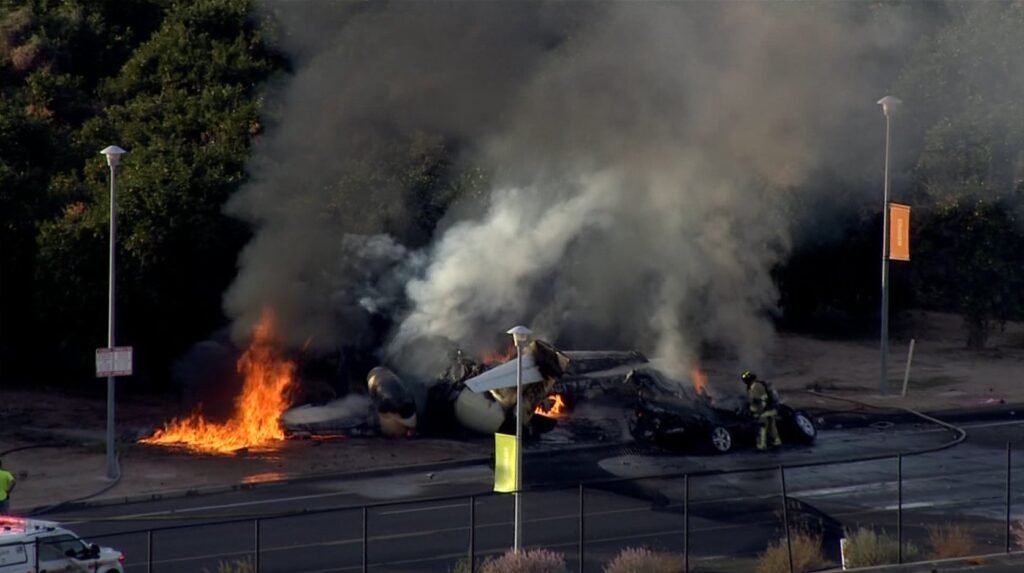what is wing tip brake on a320 Aircraft || Function, Purpose, Location, Activation of WTB || Aircraft with WTB || Aircraft without WTB – The Aviation TechBlog
What is Wing Tip Brake ( WTB )on a320 aircraft
The function of wing tip brake to hold and stop rotation of flap/slat transmission shaft when slat/flap control computer sense asymmetry, uncommanded or runways condition of flap/slat.This brake system ensures that the outboard section of the transmission shaft, which extends to the flaps and slats, is securely stopped, providing essential protection for flight operations under following scenarion:
- Asymmetry: Occurs when one side’s flap or slat deviates from the other side, leading to imbalance.
- Uncommanded Movement: Any unintended or erroneous movement of the flap/slat system.
- Runaway Condition: Continuous movement of the flaps/slats beyond the intended position.
Function of Wing tip brake
WTB is electrical control and hydraulic actuated component. WTB mainly consist of the following main components:
- Friction Disc: Provides the braking force on the transmission shaft.
- Piston: Actuates the brake by applying force to the friction disc.
- Solenoid Valve: Controls the hydraulic pressure that activates the piston.
When Solenoid valve de-energized hydraulic fluid pressure not acting on piston. Due to absence of piston force on friction disc transmission shaft turns freely.
When Solenoid valve Energized hydraulic fluid pressure act on piston. Piston apply force on friction disc which hold transmission shaft.
Solenoid valve get energization signal from slat/flap control computer.
The function of ( Pressure off brake) POB and WTB is same. Both apply brake and hold transmission shaft.
Pressure Off Brake (POB) and Wing Tip Brake (WTB)
Both the POB and the WTB serve to hold the transmission shaft and prevent undesired movement. However, the POB and WTB are positioned differently along the wing and provide complementary safety functions.
- Pressure Off Brake (POB): Installed on the inboard side of the wing, the POB provides braking on the inboard section of the transmission shaft. It is sufficient to hold the transmission shaft in regular operations.
- Wing Tip Brake (WTB): Located at the outboard end of the wing, the WTB prevents movement in the outboard section of the transmission shaft, especially useful if the shaft experiences a structural failure.
Importance of Dual Brakes:
If the transmission shaft breaks due to excessive aerodynamic forces, the POB would hold the inboard section, while the WTB secures the outboard section. This redundancy prevents uncommanded flap or slat movements in the outboard sections, which are critical for the aircraft’s stability and control, particularly during flight.
Purpose of WTB
We need WTB only when runaway, uncommanded and asymmetry condition of flap/slat arises but POB is sufficient to hold transmission shaft.
So, why we need two brake assembly to hold transmission shaft rotation?
Location of wing tip brake :
POB installed inboard of wing and WTB installed at outboard of wing.
Aircraft Without WTB
Consider the situation,Flap is extended and transmission shaft broken into two parts due excessive aerodynamic force.
Inboard part of transmission shaft hold by POB and outboard part of transmission shaft free to move because we don’t have any braking device (WTB) which hold transmission shaft.
Thus, there will be movement of flap outboard part which is critical for flight operation and safety of an aircraft.
Aircraft With WTB
Aircraft with WTB, If transmission shaft broken then POB will hold inboard part and WTB will hold outboard part. Free Movement of flap outboard part stopped by placement of braking device WTB.
Thus, aircraft manufacture installed WTP at outboard end for protection of transmission shaft if shaft broken and in normal operation provide addition support to POB when asymmetry, uncommanded and runaways condition occurred.
Why Wing Tip Brake (WTB) C/Bs Can’t Reset In-flight
The Wing Tip Brake (WTB) C/Bs have red caps on them to prevent them from being reset. The C/B TRIPPED warning on the ECAM indicates the location of the affected C/B. The following panels are monitored.These circuit breakers are intentionally designed not to be reset in flight, as resetting could potentially reintroduce the failure condition that necessitated the WTB’s activation.
Activation of Wingtip brakes (WTBs)
Wingtip brakes (WTBs), activated in case of assymetry, mechanism overspeed, symmetrical runaway, or uncommanded movement of the surfaces.
They cannot be released in flight. They use blue and green hydraulic power for the slats and for the right wing flaps, and blue and yellow hydraulic power for the left wing flaps.








